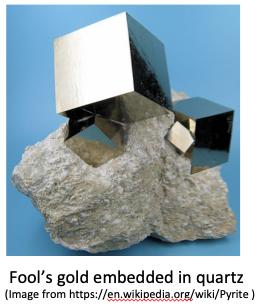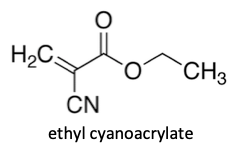Culture of Chemistry (4)
.png)
The Culture of Chemistry quizzes illustrate some of the Nature of Science aspects of the course. They aim to widen your general knowledge about our subject and give you some genuine examples of how chemistry works practically both now and in the past in everyday life as well as theoretically. Each quiz consists of ten multiple choice questions. Full answers and explanations are provided to hopefully increase your enjoyment and love of chemistry as well as stimulate your interest to perhaps do some further research..
Introduction
This is the fourth of the Culture of Chemistry quizzes. The quizzes have several aims. Essentially they illustrate some of the Nature of Science aspects of the course. They may also be helpful for your study of Theory of Knowledge as culture is one of the twelve TOK concepts. The questions are unlikely to contain content that will be examined as such in the May/November examination sessions but they aim to widen your general knowledge about our subject and give you some genuine examples of how chemistry works practically both now and in the past in everyday life as well as theoretically. They are meant to be fun and perhaps in these current Covid times also provide a little bit of light relief. I would not expect you to know many of the answers so the score you get is irrelevant but I have provided fulsome answers and explanations to hopefully increase your enjoyment and love of chemistry as well as stimulate your interest to perhaps do some further research. Some of the questions may provide you with the spark of an idea that you could develop for your individual scientific investigation (IA) or extended essay.
Culture of Chemistry (4) Quiz
Who wrote the book "Silent Spring" which first alerted the world to the environmental damage being caused by the use of pesticides such as DDT?
Silent Spring was written by Rachel Carson (1907 - 1964), an American marine biologist, and published in 1962. Its findings were initially fiercely contested by the mIB Docs (2) Teamfacturers of pesticides but eventually led to the banning of the use of DDT.
Which metal is found in fool's gold?

Fool's gold is iron pyrites with the formula FeS2. It has a brassy-yellow colour with a superficial resemblance to gold. It can be found embedded in quartz rock and also in coal.
Who plays Walter White, a high school chemistry teacher, in the series Breaking Bad?
Martin Sheen (President 'Jed' Bartlet) and Bradley Whitford (Josh Lyman) appear in the series The West Wing. Aaron Paul is in Breaking Bad but he plays Walter White's former student and partner Jesse Pinkman.
Lavoisier maintained that an acid was an oxide of a non-metal dissolved in water and so concluded that acids were substances that contained oxygen.
Who is credited with experimenting with hydrogen chloride, which forms hydrochloric acid when dissolved in water, and concluding that "It may contain oxygen, but I can find none."?
Humphrey Davy discovered chlorine and experimented on its compounds. He was the first person to conclude that acids contained hydrogen although not all hydrogen-containing compounds are acidic. Faraday was younger than Davy who worked first as Davy's assistant before making major contributions to the fields of electromagnetism and electrochemistry. Arrhenius is associated with the ionic theory of acids which states that acids dissociate to form hydrogen ions. Justus von Liebig pioneered the analysis of organic compounds by combustion to find their carbon, hydrogen and oxygen content and also developed the Liebig water condenser.
What is the main chemical component of superglues, such as Loctite®?

Cyanoacrylates are derived from ethyl cyanoacrylate and rapidly polymerise in the presence of moisture to form long chains with exceptionally strong adhesive properties.
Gunpowder is thought to have been invented during the Tang dynasty in China in the 9th Century AD. It has three main ingredients. Other than sulfur and carbon what is the third ingredient?
Charcoal and sulfur are the fuels and potassium nitrate, also known as Chile saltpetre, is the oxidizer. The reaction is quite complex but a simplified equation is 10KNO3(s) + 3S(s) + 8C(s) → 2K2CO3(s) + 3K2SO4 (s) + 6CO2(g) + 5N2(g).
Which word has the same meaning in English as it does when used specifically in chemistry?
A metathetical reaction (also known as double decomposition) occurs when parts of two compounds are exchanged as, for example, in NaCl + AgNO3 → NaNO3 + AgCl. It has the same meaning in English where sounds or syllable within a word or words within a sentence are transposed. Weak means lacking strength or dilute as in "a weak cup of tea" in English whereas it means only slightly dissociated in chemistry. Spontaneous means ΔG has a negative value in chemistry,, i.e. the reaction produces energy that can do work. In English spontaneous means "off the cuff", i.e. not planned. Volatile means "may fly off the handle" when applied to a person or refers to a situation which may change rapidly and unpredictably. In chemistry volatile means readily vaporizes.
Which village contains a quarry where four new elements were discovered?
.png)
Ytterby is a village on the island of Resarӧ in Sweden. The quarry contains the ore gadolinite from which the elements erbium (Eu), terbium (Tm), ytterbium (Yb) and yttrium (Y) were discovered. Dubnium (Db, Z = 105) is named after Dubna, in the former USSR, the site of the Joint Institute for Nuclear Research. Near the village of Derry Hill in the UK is Bowood House where Joseph Priestly was one of the first to discover oxygen in 1774. Bergara is in Spain and is where tungsten was first discovered by José and Fausto Elhuyar in 1783.
What took place in a squash court in the University of Chicago at 3.25 pm on 2nd December 1942?
 A team led by Enrico Fermi successfully produced the world's first controlled nuclear chain reaction using 235U in Chicago in 1942. The first patient to be given penicillin was Albert Alexander, a 43 year old policeman, at the Radcliffe Infirmary in Oxford, UK on 12 February 1941. Although polystyrene was discovered in 1839 it was not mIB Docs (2) Teamfactured until 1931 by the German company I.G. Farben in Ludwigshafen and styrofoam was not patented until 1944. Dorothy Hodgkin determined the structure of vitamin B12 in 1954 at Oxford University and was awarded the Nobel Prize in Chemistry in 1964 for her work on confirming the structures of vitamin B12, insulin and penicillin. .
A team led by Enrico Fermi successfully produced the world's first controlled nuclear chain reaction using 235U in Chicago in 1942. The first patient to be given penicillin was Albert Alexander, a 43 year old policeman, at the Radcliffe Infirmary in Oxford, UK on 12 February 1941. Although polystyrene was discovered in 1839 it was not mIB Docs (2) Teamfactured until 1931 by the German company I.G. Farben in Ludwigshafen and styrofoam was not patented until 1944. Dorothy Hodgkin determined the structure of vitamin B12 in 1954 at Oxford University and was awarded the Nobel Prize in Chemistry in 1964 for her work on confirming the structures of vitamin B12, insulin and penicillin. .
Which is a 1 molal solution?
Molal solution are used when colligative properties are involved, i.e. those that depends upon the number of particles present rather than their chemical nature. These properties includes lowering of vapour pressure, elevation of boiling point and depression of freezing point.

 IB Docs (2) Team
IB Docs (2) Team